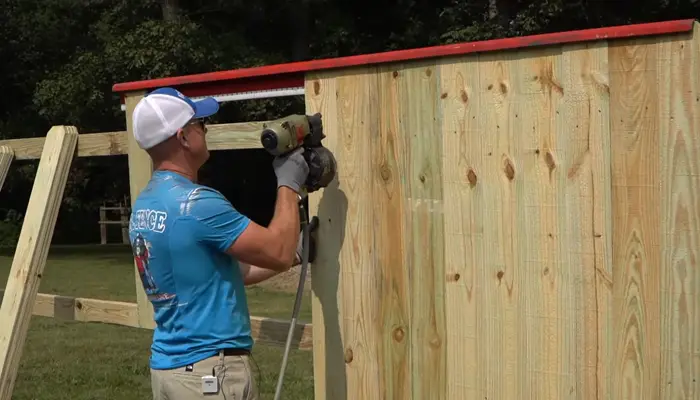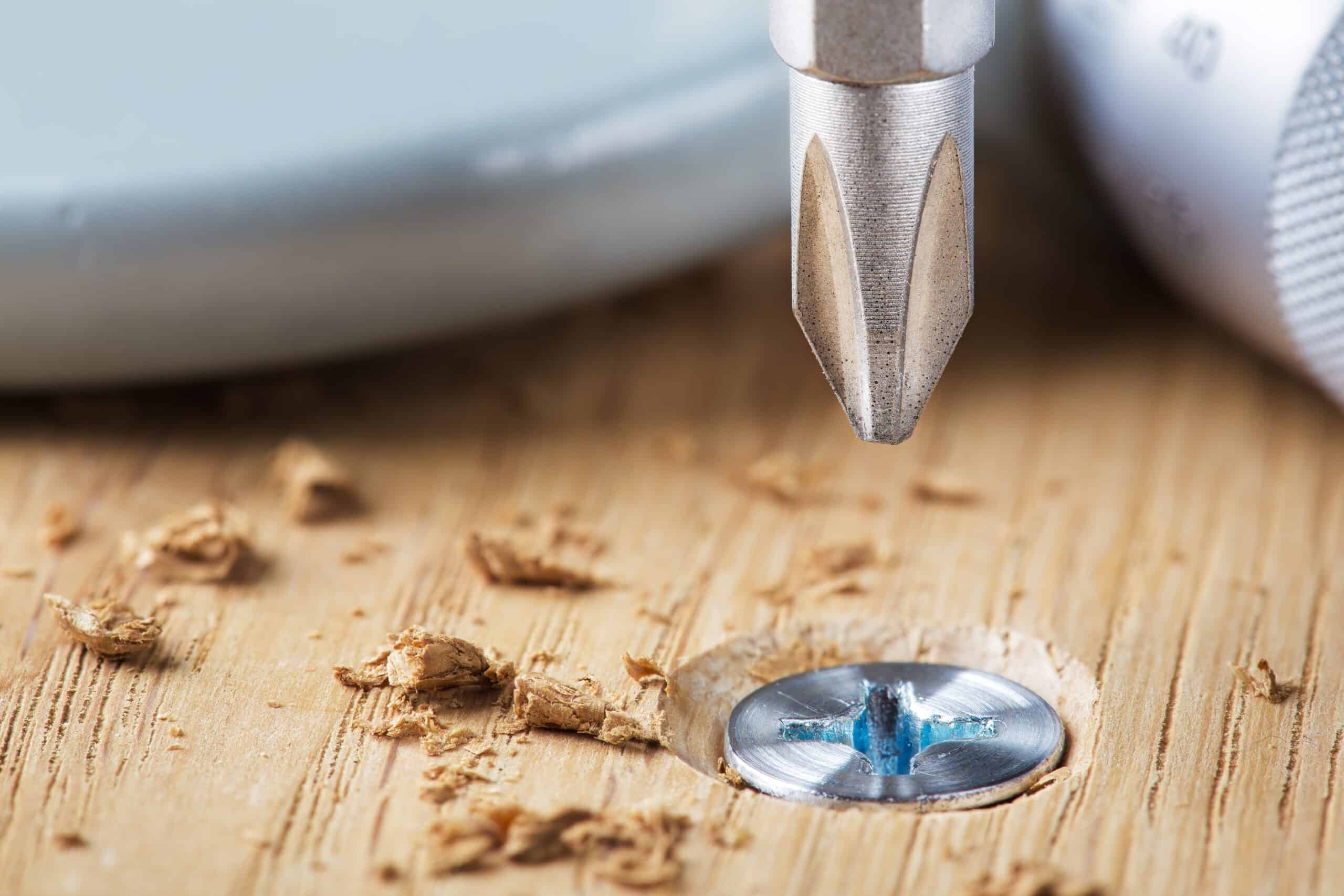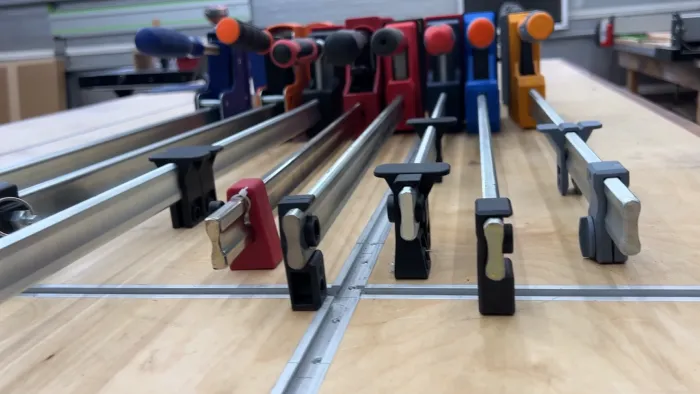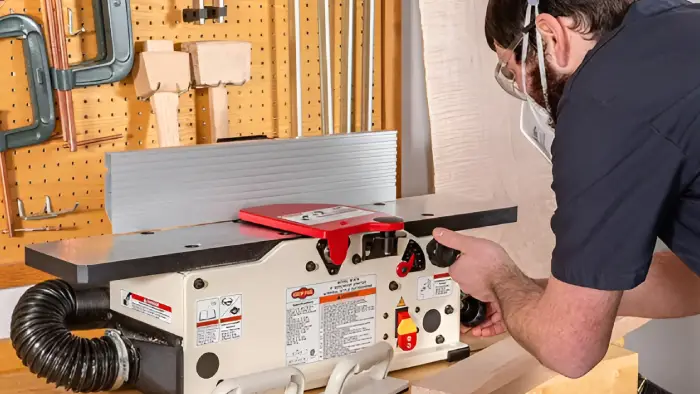WoodenuKnow.com is a participant in the Amazon Services LLC Associates Program, an affiliate advertising program designed to provide a means for sites to earn advertising fees by advertising and linking to Amazon.com and may earn from qualifying purchases.
Fencing is a structure that surrounds an area, usually outside, and is usually made of posts connected by boards, wires, or rails. Fencing is often used to protect property, livestock, or people. A fence can also be aesthetically pleasing.
Installing a fence requires nail guns to drive nails into the ground. These tools are often used during the fencing process. But how to use a nail gun for fencing to secure the fence to the posts?
When working with wood, these nail guns are invaluable tools because they avoid the need to hammer your thumb every time you install a fence post. They can also be used to attach wood fences to vinyl fences.
This article discusses how you can use a nail gun for fencing, do it with some handy steps, and the kinds of nail guns you can choose from.
How to Use a Nail Gun for Fencing – Convenient Steps
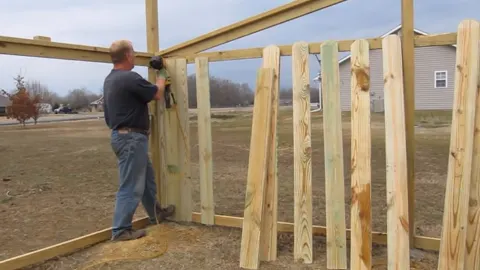
Using a nail bank for fencing is not as difficult as you may think. With the right tools and some know-how, you can quickly secure your fence to the posts. For fencing with a nail gun, you need to have these tools:
- Tape measure
- Level
- String line
- Fence posts
- Postholes digger
- Nail gun
- Safety glasses
- Ear protection
- Gloves
- Ring shank nail or galvanized nail
Here are some easy steps on how to use a fencing nailer for fencing:
01. Make a Plan:
The first step is to make a plan. You need to know the dimensions of your fence and where you want the posts to be placed. Once you have a plan, you can start digging the postholes.
02. Dig the Postholes:
The next step is to dig the postholes. The depth of the postholes will depend on the height of your fence. Once the postholes are drilled, you can place the fence posts into them.
03. Choose the Right Nail Gun:
There are several types of nail guns for fencing. Some are not suitable for fencing. A finish nailer is not powerful enough to drive nails into the ground. Instead, you need to use a round head framing nailer or coil-fed nailer.
04. Set Up the Nail Gun:
Once you have chosen the right nail gun, you need to set it up properly. This includes loading the nails into the gun and setting the depth of the nails.
05. Begin Nailing:
The next step is to begin nailing. The fence needs to be inspected from one end to the other. Make sure that you drive the nails into the fence posts at a right angle.
06. Check the Fence:
Once you have finished nailing, you need to check the fence to ensure it is secure. You can do this by tugging on the boards or rails. If they are loose, you need to drive more nails into them.
You can easily use a nail gun for fencing by following these steps. Remember to wear safety glasses and ear protection when using the nail gun. Also, be sure to choose the right type of nail gun for the job.
Types of Nail Guns Available for Fencing
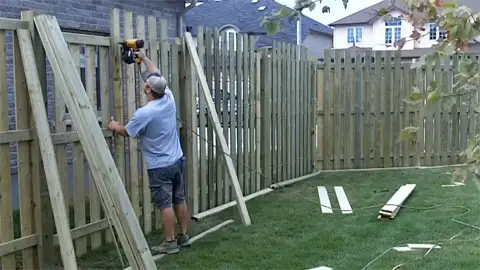
Nail guns come in various types, each designed for a specific purpose. The following are some of the most common types of nail guns that can be used for fencing:
Framing Nailer:
A framing nailer is a type of air-powered nail gun used to drive nails into hardwood and softwood. It is the most potent type of nail gun and is ideal for use in fencing.
Coil-Fed Nailer:
A coil-fed nailer is a pneumatic nail gun that uses coils of nails instead of magazines. A coil nailer is less potent than a framing nailer but can still be used for fencing.
Finish Nailer:
A finish nailer is a pneumatic nail gun used to drive nails into trim and molding. It is not powerful enough to drive nails into the ground and should not be used for fencing.
Brad Nailer:
A brad nail gun is a pneumatic nailer used to drive small nails into wood. Brad nail guns are not powerful enough to drive nails into the ground.
Choose the correct type of nail gun for your needs to ensure that your fence is properly secured. But whatever type of nailer you choose, always remember to wear safety gear when using it.
Tips on How to Use the Nail Gun Correctly
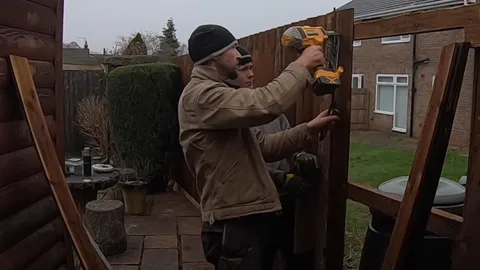
Nail guns are powerful tools that can be dangerous if misused. To avoid injury and damage, follow these tips on how to use the nail gun correctly:
- Wear safety glasses and ear protection
- Until you’re ready to shoot, don’t pull the trigger.
- Be sure of your target before you hit.
- Keep the muzzle of the nail gun pointing down range.
- Do not shoot nails into concrete, asphalt, or other hard surfaces.
- Use only nails that are made for use in fencing.
- Always follow the manufacturer’s instructions when using the nail gun.
You can avoid accidents and injuries when using a nail gun by following these tips. Remember to always wear safety gear and be aware of your surroundings when using this tool.
How to Fence Properly on Your Property
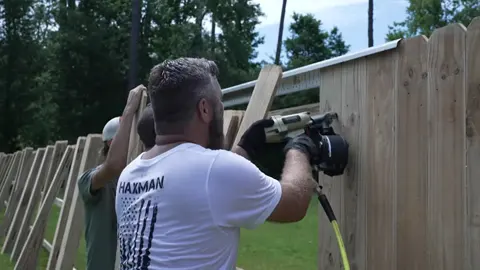
Fencing is a great way to improve the look of your property and keep your family safe. However, it is essential to fence appropriately to avoid accidents and injuries.
Here are some tips on how to fence properly:
01. Choose the Right Type of Fence:
There are many different types of fences available on the market, so choosing the right type for your needs is essential. If you are looking for a fence to keep your children safe, you will need a different type of fence than if you are looking for a fence to keep your pets safe.
02. Choose the Right Material:
Many different materials can be used to make a fence, so choosing the right material for your needs is essential. If you are looking for a durable and long-lasting fence, you will want to select a material such as aluminum or steel.
If you are looking for a less expensive fence, you may want to choose a material such as wood or vinyl.
03. Choose the Right Height:
The height of your fence will need to be appropriate for the type of fence that you choose. If you choose a fence to keep your children safe, you will want to choose a fence at least 4 feet high. If you choose a fence to keep your pets safe, you will want to choose a fence at least 6 feet tall.
04. Choose the Right Style:
The style of your fence should be based on the overall look of your property. If you have a traditional home, then you will want to choose a fence that has a conventional style. If you have a modern home, you will want to choose a fence that has a contemporary style.
05. Choose the Right Color:
The color of your fence should be based on the overall look of your property. You will be able to blend your fence in with your surroundings if you choose a color that matches your house. If you want your fence to stand out, you will want to select a color different from your home’s color.
06. Hire a Professional:
If you are not sure how to fence appropriately, you may want to hire a professional to do it for you. A professional will be able to install your fence correctly and ensure that it is safe.
By following these tips, you can ensure that your fence will be installed correctly and safely. Moreover, you can be sure that your fence will improve the look of your property.
What to Consider When Fencing With Nail Gun
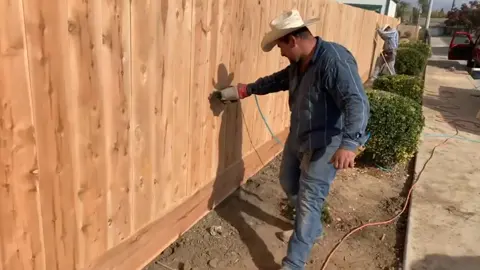
When you are fencing with a nail gun, there are several things that you need to consider to ensure that the job is done correctly and safely. Here are some tips on what to think when fencing with a nail gun:
01. Size of the Nail:
When it comes to choosing the right nail gun for your fencing project, one of the most important factors to consider is the size of the nails. Nail guns come in various sizes, and the size of the nail you choose will depend on the thickness of the fence boards you are using.
02. Gap Between the Fence Boards
You will need to consider the width of the gap between the fence boards. A wider gap will require a longer nail, while a narrower gap can be closed with a shorter nail.
03. Nail Delivery:
If you are in the market for a nail gun to help you with your fencing, you need to consider nail delivery. The two main types of nail guns are coil and strip. Coil guns have a magazine that holds coils of nails, whereas a strip gun has a long strip of nails in the magazine.
Each has its pros and cons. For example, coil guns are less likely to jam than strip guns. Strip guns are lighter and cheaper, but they are more likely to clog. Ultimately, the type of framing nail gun should be based on your preferences and needs.
04. Power Source:
There are two types of nail guns: battery-powered or cordless and pneumatic. Both have their pros and cons, so before purchasing a gun, consider the intended use.
For example, a pneumatic nailer is ideal for construction projects with a reliable source of compressed air. However, these guns can be heavy and unwieldy, making them less suitable for smaller tasks.
A battery-powered or best cordless nail gun, on the other hand, is more versatile and can be used in a variety of settings. However, they tend to be less powerful than pneumatic models and require frequent recharging. Ultimately, the best nail gun for each individual will depend on their needs.
So whenever you are planning to buy or use a nail gun for your fencing scheme, be sure to keep these critical factors in mind. Doing so will help you choose the right gun for the job and ensure that your project is completed safely and successfully.
FAQs
Listed below are some common questions regarding fencing with a nail gun that people often ask:
01. What Kind of Nails Do You Use For Fencing?
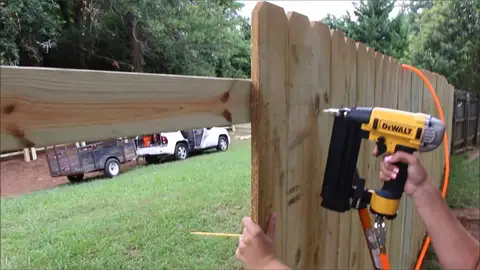
The type of nails you use for fencing will depend on the thickness of the fence boards. Fences will typically be securely fastened using galvanized nails, but stainless steel nails should be used for coastal areas.
02. What Degree Nail Gun is Best for Fencing?
It can work with a 21-degree flat nail head two to three and a half inches long, making it a versatile tool capable of completing durable tasks.
03. Can I Use a Finish Nailer for Fencing?
No, you should not use a finish nailer for fencing. Finish nailers are designed for smaller tasks and will not be able to handle the thickness of wood fence boards. You need a roofing or framing nailer for this project.
04. Can I Use a Staple Gun on a Fence?
No, you cannot use a staple gun on a fence. Fences need to be fastened using nails or screws, not staples. Moreover, the staples will not be able to penetrate the thick fence boards.
05. Can I Use a Nail Gun for Fence Pickets?
Yes, you can use a nail gun for fence pickets. Just be sure to choose the right size nail for the thickness of the picket. Otherwise, the picket may split or crack.
In Conclusion
Fencing is a project that requires careful consideration. When choosing a gun for your fencing project, you should consider the gap between the boards, the size of the nail, and the type of gun.
Regarding how to use a nail gun for fencing, there are several things that you need to consider to ensure that the job is done correctly and safely. By following these tips, you can ensure that the fence will be put up correctly and safely.
Ultimately, every individual will have their preferences, so you must choose what works best for you. Hopefully, this article provided you with a better understanding of using a nail gun on the fence easily.

